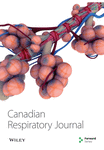Effects of One-Week Tongue-Task Training on Sleep Apnea Severity: A Pilot Study
Abstract
The aim of the present study was to assess the effects of one-week tongue-task training (TTT) on sleep apnea severity in sleep apnea subjects. Ten patients with sleep apnea (seven men, mean [± SD] age 52±8 years; mean apnea-hypopnea [AHI] index 20.9±5.3 events/h) underwent 1 h TTT in the authors’ laboratory on seven consecutive days. A complete or limited recording and tongue maximal protruding force were assessed before and after one-week TTT. One-week TTT was associated with a global AHI decrease (pre-TTT: 20.9±5.3 events/h; post-TTT: 16.1±5.1 events/h; P<0.001) and AHI decrease during rapid eye movement sleep (pre-TTT: 32.2±18.4 events/h; post-TTT: 16.7±6.6 events/h; P=0.03), while protruding force remained unchanged. The authors consider these results to be potentially clinically relevant and worthy of further investigation in a large randomized trial.




